There I was, standing up to my knees in the long grass trying to examine a flower, when a woman passing on the nearby path asked, “Have you seen the bee orchids?” I turned and answered “No, but I was hoping to find them” and she continued “If you go nearly to the end of the reserve by the bridge, there’s a very nice one”.
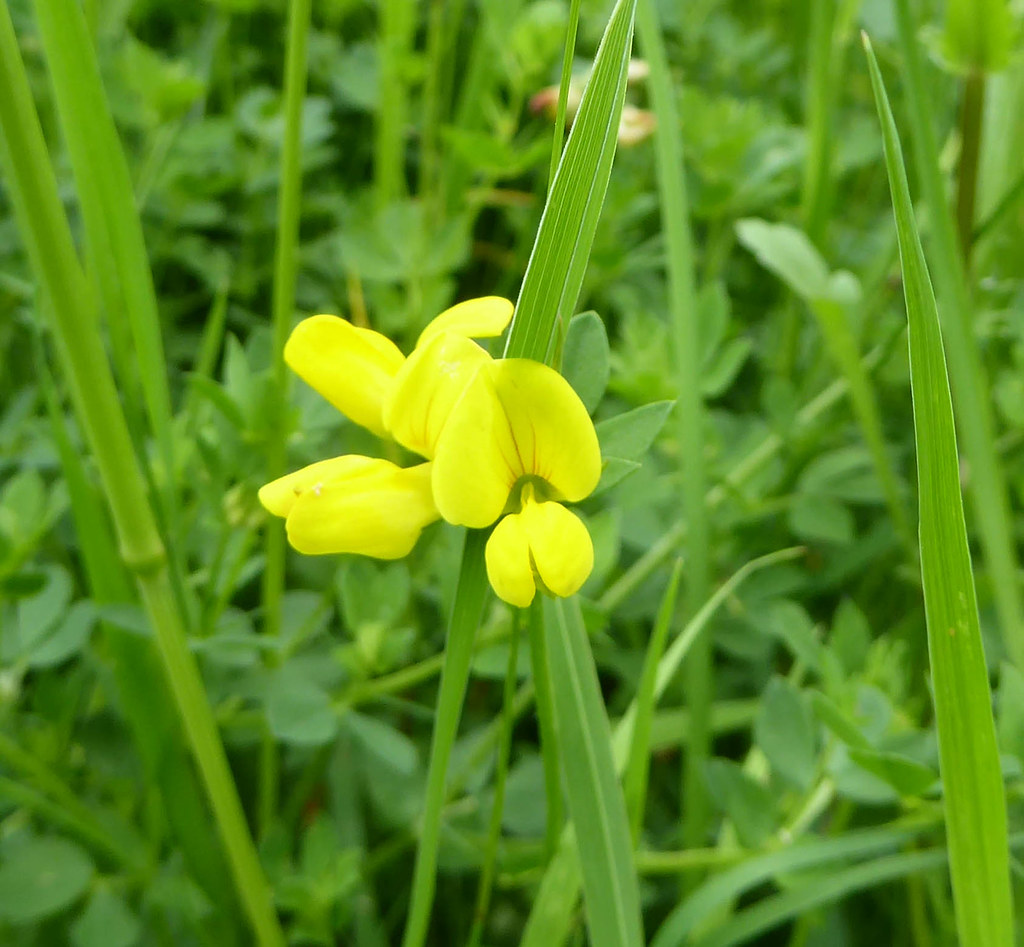
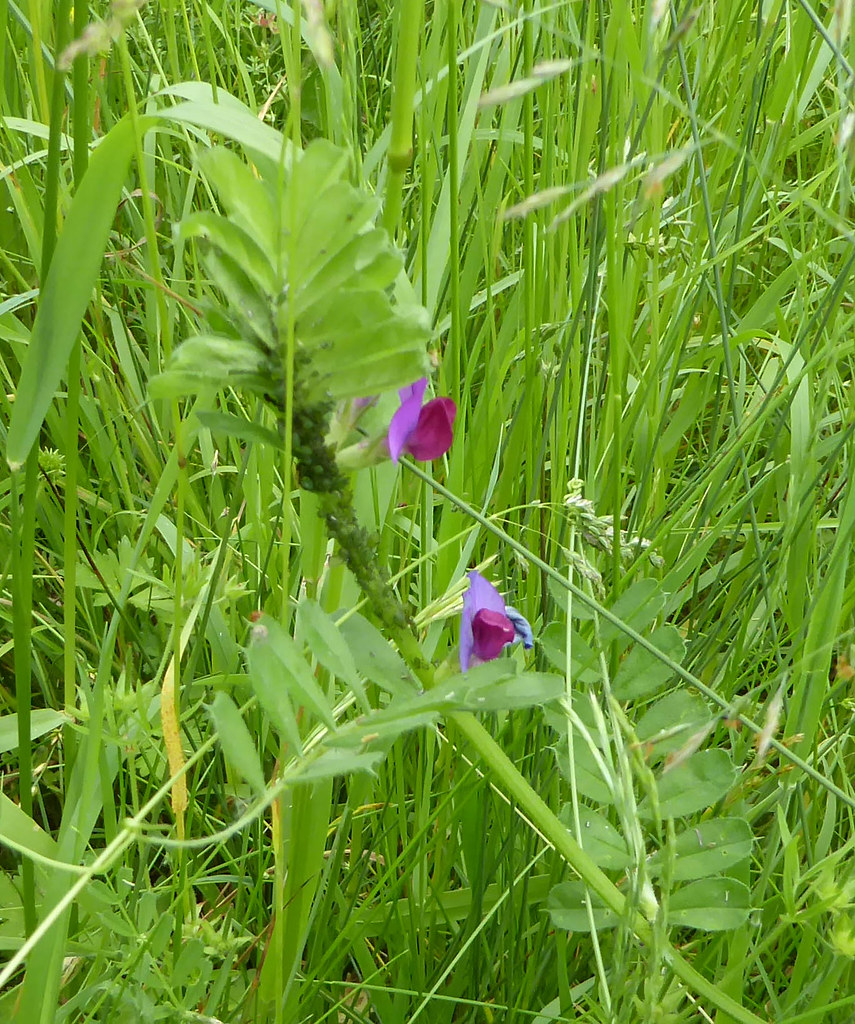
Aller Brook Nature Reserve in Newton Abbott is a place of contrasts. It might reasonably be called an edgeland for it is on the edge of the town and the reserve starts where the Brunel Industrial Estate ends. But it’s more urban than even that implies; the other main boundary of the reserve is the A380 trunk road making its presence felt through the continual loud rumble of cars and lorries speeding between Torquay and Exeter. Between these two urban barriers is an extended triangular tongue of land with the water of Aller Brook running down the middle in a deep scrub-lined channel – this is the Nature Reserve.
Despite all the noise and light-industrial activity, this reserve is a perfect example of how nature can be coaxed in to a space if it is properly managed. Kingfishers and otters are reported to visit the Brook and, when I was there, birdsong filled the air, at least when traffic noise allowed. The main path along the boundary with the industrial estate was fringed with typical May flowers: red campion, cow parsley and brambles, all blooming beneath a thick tree canopy. On the other side of the path, the Brook was occasionally visible through the scrub shield.
Further along the path, I came across several small areas of grassland managed as hay meadows. Typical meadow plants were flourishing adding splashes of colour to the muted green grasses. Tall drifts of yellow and white ox eye daisies and unruly purple knapweed grew through the thick vegetation. Common vetch, dotted with pink pea flowers, and buttery yellow bird’s foot trefoil scrambled through the rough cover holding on wherever they could. A few common spotted and marsh orchids added a little exoticism. Along the edge of the brook there were stands of dog rose with their floppy, pale pink petals. With all these flowers about, bees were abundant.
The reserve ends at a bridge where the Brook empties into the estuary of the river Teign between huge swathes of tea-coloured reed beds and shiny pillows of brown mud. The same reeds form a narrow border to the brook. The bridge area was the part of the reserve where the Bee Orchids were supposed to be, so I looked very carefully within the grass. They were quite easy to spot, six fine flower spikes standing about 20 cm above the ground with triple propeller-like, pinkish-violet sepals surrounding their complex flowers.
From the bridge, a path returns along the other side of Aller Brook and, at least at the beginning, the vegetation is quite similar. Compact tracts of grassland sloped downwards to the Brook; common vetch scrambled through the grass accompanied by a few pyramidal orchids. This side of the reserve, however, felt more contained with stands of brambles and thick tree cover attempting to mask the nearby main road. It was still slightly unnerving to see glimpses of cars speeding past at 70 mph about 20 metres away. Incongruously, near here I found another impressive group of Bee Orchids, five spikes in total, with two growing perilously close to the path edge.
As the reserve narrows, so does the path and for some time I walked along a green corridor beneath thick tree cover with relative shade and few flowers. Eventually the path emerged into the light near a very busy roundabout and the car park of the Toby Carvery. A ranger I had met earlier told me to look at the grassy area around the car park. I had to ask a cuddling couple sitting on the edge of this area if they minded if I wandered around the grass but eventually I found thirteen flowering spikes of Bee Orchids looking very fresh, together with one pyramidal orchid. This unlikely and rather bleak urban spot has a better population of Bee Orchids than the Nature Reserve itself!
There is something very beautiful and rather weird about the flowers of the Bee orchid when you look beyond the three pink sepals. The most obvious part is the lower petal, the labellum, largely a rich dark red but decorated with variable, yellow horseshoe patterns. Either side of the labellum are two spurs with a furry surface. Above the labellum is a pale green arching structure containing two small yellow balls (pollinia) supported by fine threads so that when the wind blows these vibrate. Above this pale green structure are two horns.
As the name of the orchid suggests, some people see a bee in the complex structure of the flowers. They imagine the body of a chunky bee (the labellum, complete with furry extensions) with antennae (the two horns) and wings (two of the sepals). To be honest, I don’t get this – all I see is a complex and idiosyncratic flower but perhaps I am being too literal. I showed the pictures to Hazel, however, and she immediately saw the bee.
The apparent resemblance of the flowers to bees is also linked with theories of pollination whereby a male bee sees the orchid “bee”, thinks it is a female and tries to pseudo-copulate. As it does so, it picks up pollen from the pollinia and when it leaves, disappointed, it tries again on another flower pollinating it at the same time. In southern Europe, the Bee Orchid is cross-pollinated by bees of the Eucera genus but to me none of these bees looks anything like the Bee orchid. But anyway, who knows what a bee “sees” and it has been suggested that the odour of the flower is more important in attracting the male bees. To complicate things even more, Bee Orchids in the UK self-pollinate so they manage without bees.
Visiting a place like Aller Brook I can’t help but reflect on our relationship with nature. I really like the Aller Brook Nature Reserve, there’s something special about the grassland with its profusion of meadow flowers and the Brook with its resident kingfishers and otters. I love the orchids. I can’t, however, help feeling troubled by the urban noise, the proximity of traffic and light industry. This juxtaposition of modern urban life with some of the real glories of nature highlights our dysfunctional relationship with wildlife. Is this tiny scrap of land the best we can do? Surely we should be giving nature a higher priority rather than endlessly building roads and houses?
As I thought about this, Joni Mitchell’s song, Big Yellow Taxi kept coming back to me, particularly the words:
“They paved paradise and put up a parking lot”
I visited Aller Brook Nature Reserve on May 30th 2017

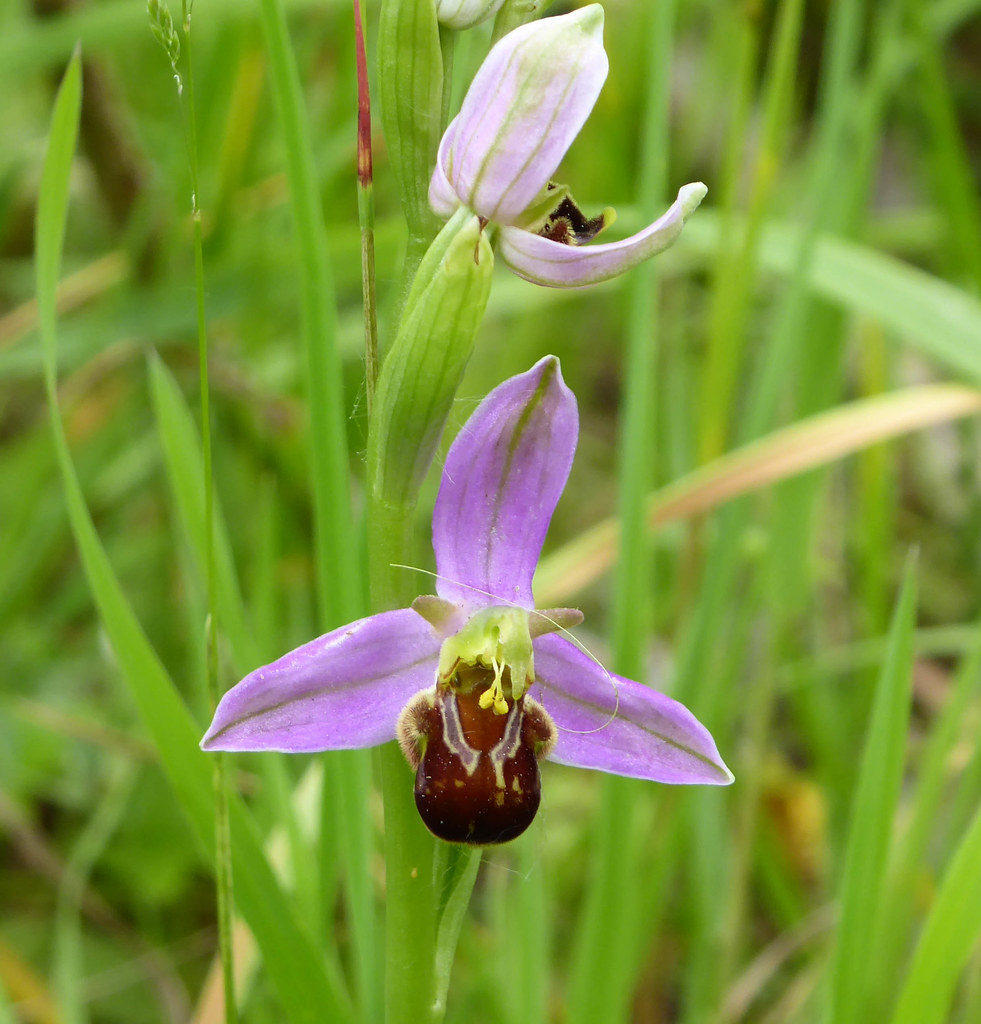
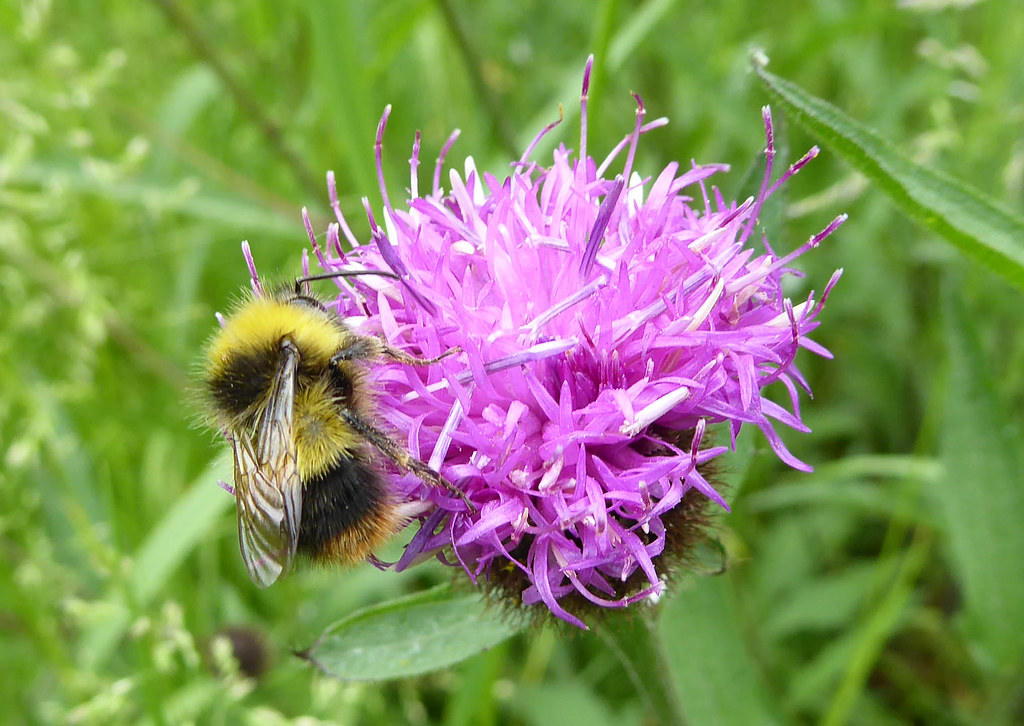
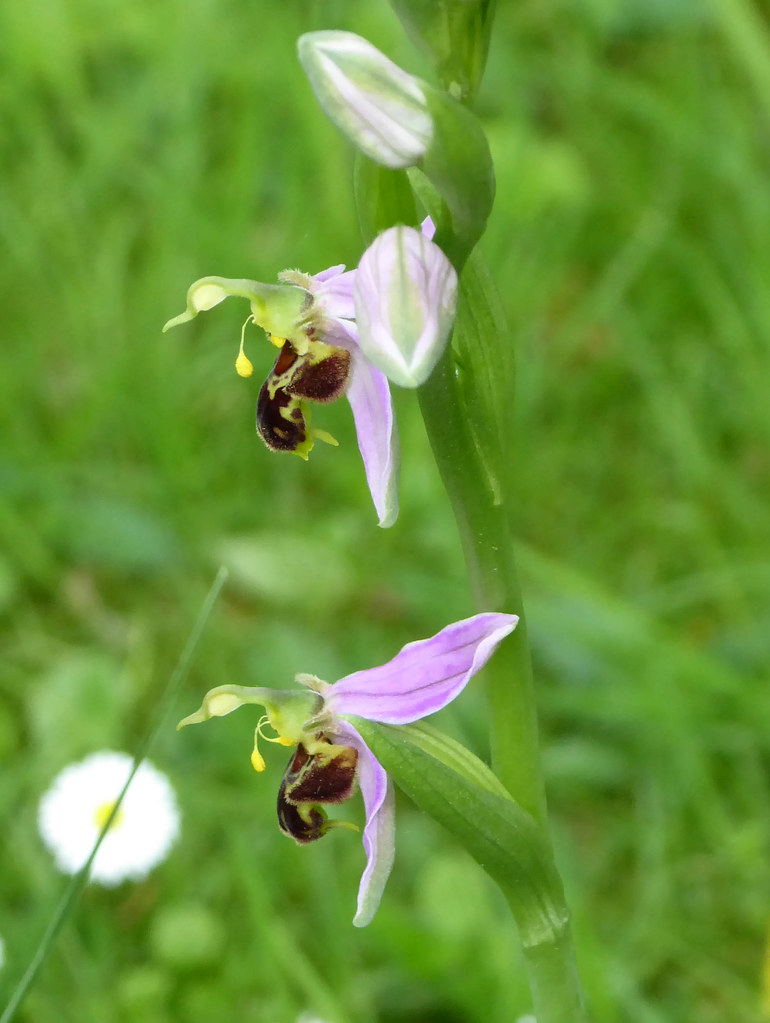
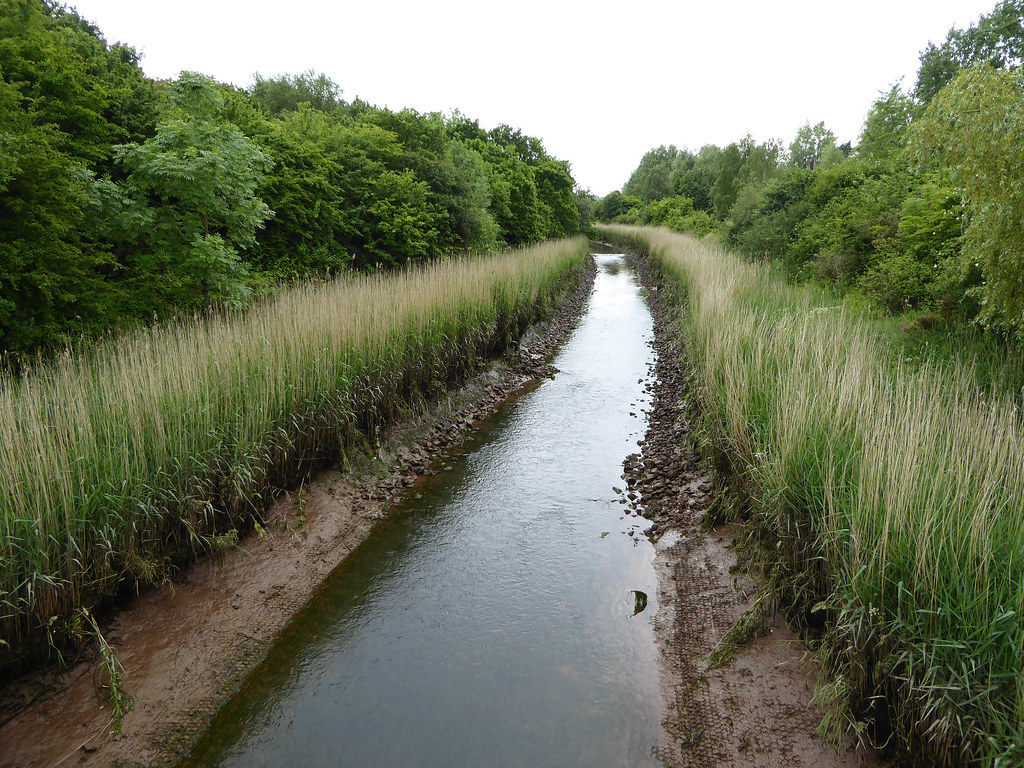



So interesting! I had forgotten that song but my thoughts often follow that line. Still, it made me smile thinking of you creeping up behind the couple and explaining you were looking at the flowers. Amelia
LikeLike
Thanks, Amelia. Yes, it was a little odd having to ask the couple if I could look at the flowers but I think they were mostly oblivious.
LikeLike
Very interested in there being such beauties near Newton Abbot, which I think of as very built up and urban, such is the resilience of nature that they survive and even thrive. Beautiful photos – Vetch is a favourite of mine, so perfect and beautiful in it’s smallness, and the Bee Orchids are really stunning. Thank you Philip for another Nature insight.
LikeLike
Thanks, Sue, the reserve is a small oasis in Newton Abbot’s urban feel but there is much to see, at other times of the year also.
LikeLike
Splendid photo of the bee orchid !
LikeLike
Merci!
LikeLike
Splendid photo of the bee orchid !
LikeLike
Merci, Dominique!
LikeLike
Fascinating, Philip! I’m going to make a trip to see these!
LikeLike
Thanks Miriam. The Bee Orchid flowers were still there at the weekend but they may not last long in this heat.
LikeLike
it must have been wonderful to see so many bee orchids together. We saw some in Portland last year they were smaller than I imagined. Despite the proximity to the road it is good that wildlife in thriving.Sarah x
LikeLike
Thanks Sarah, it was wonderful to see them especially in such an unlikely place.
LikeLike
I loved reading about this wonderful reserve, Philip, and the beautiful bee orchid. I’m so thrilled when I learn of protected spaces that sit adjacent more industrial sites. We need them so desperately, knowing that our “wild spaces” are so often under siege, I know that you have a special place here. The bee orchids are exquisite little things! How nice to see the bees taking a dip! 🙂
LikeLike
Thanks Debra, I am glad you liked this piece about the nature reserve. It is a lovely place despite the proximity of industry.
Talking of lovely places, there was an article in the paper yesterday about Big Sur and how Highway 1 is still impassable between LA and San Francisco. I have very fond memories of this drive by the Pacific.
LikeLike
I see the bee! I don’t think we get these up here… heath, common-spotted, frog, etc, but not the bee orchid… very pretty. Lovely photos as always, except for that last one, which does indeed bring to mind Ms Mitchell’s song 😦
LikeLike
Thanks Laura. I didnt like the song when it first came out but I eventually saw how prescient she was.
LikeLike
The closest I’ve been to Aller Brook was the bridge at Aller Junction and that was a long time ago! Love your images of the Orchids.
I really feel your comments regards the tiny patch of nature hemmed in by roads and housing. Long Lane Pasture – 400yds from me – sits next to the A406 and the Northern Line so we get a mix of traffic and train noise. Fortunately our resident Blackbirds, Robins and Wrens can sing loudly 😉
LikeLike
Thanks for your comments. I have never been on the bridge but I do go across Aller Junction on the train quite often.
The only thing we can do with reserves like Long Lane Pasture and Aller Brook is to cherish them despite the noise. The day I was at Aller Brook a warden pointed out a Cetti’s Warbler singing away despite the traffic noise.
LikeLiked by 1 person